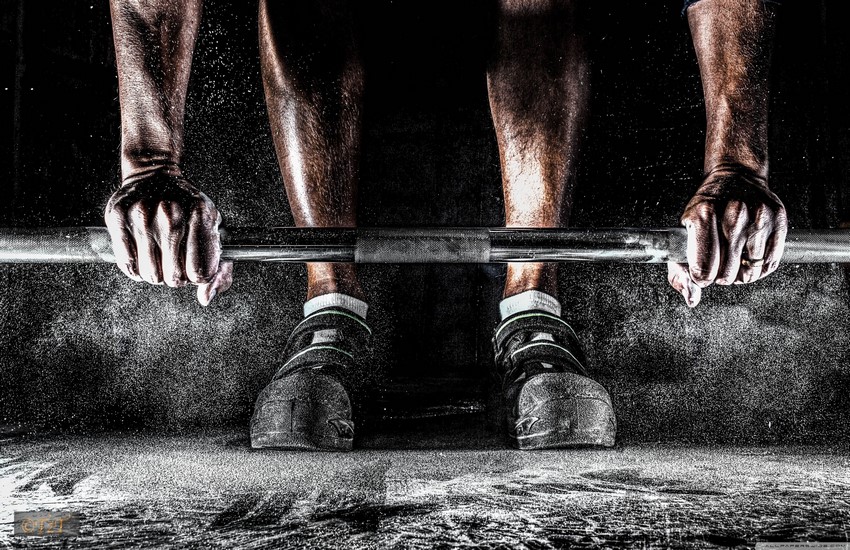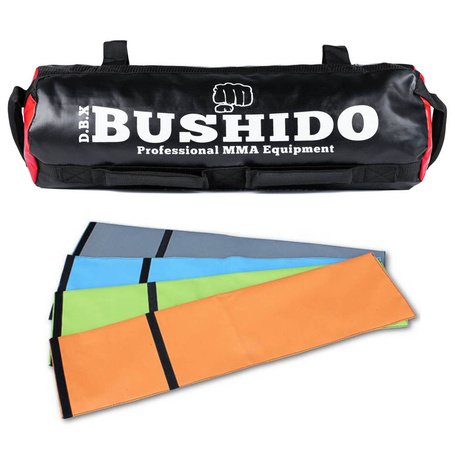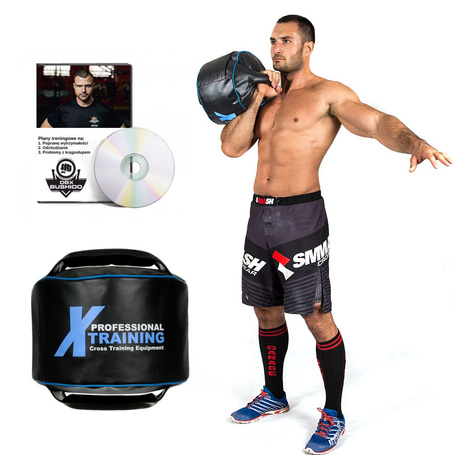Station circuits in combat sports - how to train effectively in circuits

Another promised post on the topic of wali sports - STATE BOTTLES
In my opinion, it is an excellent tool for building fitness in sports with mixed aerobic characteristics (fast acceleration and deceleration).
Unfortunately, the myth continues to persist that a fighter should run a lot and that is how to build fitness.
Consider one thing, if we wanted to fight at the heart rate we run or do cardio it...... Probably in our direction would fly whistles from the audience or juicy kur.... what a lame fight this is
Most sports are typically mixed in nature. In combat sports, there are quick exchanges and moments of backlash.
Same thing in soccer (running quickly to the ball and slowing down/trotting) or in tennis (running to the ball and waiting for the opponent to return the ball or the next serve)
Does cardio training have any use?
I, if I already recommend cardio training, it is always running. Depending on what time of year we are outside or on the treadmill. A bike or an orbiter is unlikely to be a good option for a fighter. The movement is supposed to be natural, not forced by a machine. I also occasionally use a rowing machine or stationary bike (if the athlete is returning from injury) but 90% of the time I choose to run.
Personally, I value cardio training for issues:
- Build aerobic capacity in a beginner athlete
- If we are talking about running, in my opinion, it is a nice form of mental relaxation for the warrior, giving a moment for oneself and forgetting about problems (especially outside where we are in contact with nature)
- At the point when we are already approaching, say, a week or two into the fight, and we want the fighter to catch freshness. Then running 20-30 minutes will also work because, unlike intervals, it will not strain the nervous system, but will allow you to sustain aerobic capacity
And that's pretty much it. I only use cardio training for such issues (not to be confused with running, as I use running in the form of sprints to build capacity in my athletes).
If you follow foreign portals and foreign athletes, you will see that they are also moving away from long running sessions. Even marathoners do a long-distance run once a week. They realized that non-stop long-distance running was damaging the body and putting it at a faster risk of injury. Instead, they weave intervals at a higher heart rate into their workouts.
Circuit training
In my opinion, this is one of the best ways to build aerobic capacity in combat sports athletes and beyond. As I mentioned in a previous post, strength training is the foundation for me, which I translate later into other motor skills, and this tool for me is circuit training.
Assuming that we still have about 2 months to fight and we have worked solidly through the strength period, then for the first 3-weeks, circuit training still consists of exercises with strength characteristics.
When the fighting time shrinks to 4-5 weeks then I incorporate fighter-type exercises into the station circuits
What it looks like in practice?
Circuit training 2 months before the fight:
- Station 1- Kettelbell swing
- Station 2 -Olympic plea
- Station 3-Mountain climbing/moutain climbers
- Station 4-Soldier press with two kettelbel, alternating
- Station 5-Jumping on boxes Station
- Station 6- Hitting the tire with a hammer Station
- Station 7- Goblet squat Station
- Station 8- Fall arise with straight punches Circuits 2-4 time 20-30sec on 10-20 sec break.
Pause 2-3 minutes between circuits
We choose the time and number of circuits:
- Under the level of the athlete
- Under the weight of the athlete (a heavier athlete will need more time to regeneration)
- The time we have until the fight (the closer we get, the more demanding the training) As we get closer to the fight, we incorporate into the station circuits exercises similar to the movements we perform naturally in the fight (we bring the training conditions closer to what they will be in the cage/ring) these can be, for example, boxing runs, hitting the boxing bag.
For example (modified previous plan):
Station 1- Kattelbell swing
Station 2-Boxer run
Station 3-Mountain climbing/moutain climbers
Station 4-Hitting the boxing bag
Station 5-Jumping on boxes
Station 6- Hitting a tire with a hammer
Station 7- Goblet squat
Station 8- Flipping the dummy
Such a plan gives us, first of all, more mental comfort, because we know that we have the gas to hit fast without getting tired, and we know that we are able to recover faster between rounds.
Such training can also serve as a diagnostic training whether we are making progress. We count how many repetitions we were able to do in 30 sec, say in the 2nd circuit, and compare how many repetitions we were able to do a week/two weeks ago.
I would like to point out that the perimeters always vary from player to player and above is just an example.
It is always necessary to soberly evaluate the player and select the circuit under him. Here we have a spectrum of variables such as exercise time, length of rest, exercise selection, number of exercises in a circuit.
That's as much as I wanted to share with you today, and in my opinion, station circuits are a great way to build fitness. We work in different planes, and also the training itself is not boring, unlike an hour-long run. As always, let me know in the comments what you think of the workout and if you like it, paw up, and if not, paw down if you like the article, next time I'll get into building momentum and show what ways I have to do it .
Author of the article:
 |
Artur Jobda Personal trainer, nutritionist |



